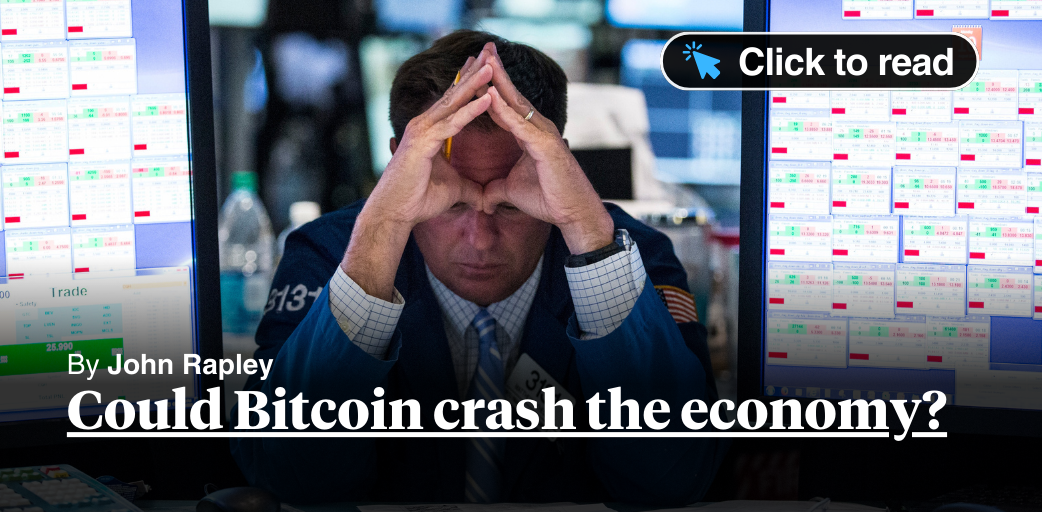Billionaire hedge fund manager Bill Ackman generated some buzz over the weekend when he suggested that Bitcoin could tank the economy. This idea is not new — indeed that may be its raison d’être — but the possibility is now receiving serious attention in the financial sector. JP Morgan strategist Marko Kolanovic had already chimed in last week that Bitcoin’s stratospheric ascent could lead the Federal Reserve to postpone interest-rate cuts.
Frothy prices create a “wealth effect”, as asset-owners who feel richer spend more, pumping demand. Further, the owners can leave the job force when near to retirement, reducing labour supply. These two responses to the recent run-up on Wall Street have begun to complicate the Federal Reserve’s efforts to bring down inflation.
Ackman adds another possible dimension. Demand for Bitcoin causes new mining, which consumes energy. Demand for energy drives up energy prices, which in turn raises inflation. Then, “Bitcoin goes to infinity, energy prices skyrocket, and the economy collapses.” That’s even more true of AI, the other bubble blowing on Wall Street. Although the technology may open infinite possibilities, it too demands an awful lot of energy, and its continued ascent could well drag up inflation.
Back in 1987, when then-Fed Chairman Alan Greenspan initiated the so-called “Greenspan Put”, assuring investors that the central bank would underwrite asset values whenever they fell sharply by printing new currency, he launched the era of unlimited money. Ever since, central bankers in developed economies have repeatedly assured asset-owners they’d do “whatever it takes”, in the memorable words of former European Central Bank head Mario Draghi. With the advent of quantitative easing after the 2008 crisis, they turbocharged the printing presses. Global money supply hasn’t literally become infinite, but investors have been assured that more can always be created.
Bitcoin’s architects spotted this vulnerability. By fixing the digital currency’s supply at its creation, they designed an asset which could only ever go up: infinite demand had met finite supply. When the pandemic unleashed the latest burst of money-printing in early 2020, Bitcoin was unbound, rising tenfold over the next year alone.
Ever since, central banks have been waging a running battle with the cryptocurrency. Whenever they say they’re going to restrict money supply, thereby protecting its value, Bitcoin falls — it’s no accident that it crashed after central banks began raising interest rates late in 2021. Whenever central bankers say they’re going to ease up again, Bitcoin surges, as happened after Jerome Powell announced the “Powell pivot” late last year.
Now, though, we’re seeing a new dimension to this syndrome of limited supply meeting endless demand. Even if fans of AI and crypto are correct — that they open up a future of endless horizons — both ultimately depend on a finite resource. Even if we built the economy entirely on renewable energy, whose supply is infinite, the infrastructure needed to harness it depends on resources which are not — the minerals powering the windmills and solar panels and battery storage it requires.
The imaginations of central bankers and tech bros alike seem to have no limits. But nature apparently does, and it’s proving recalcitrant in yielding up the resources at the rate they can print money and create new assets. Unless this imbalance is resolved, Wall Street bubbles will prevent inflation from falling.
Central bankers thus face a tricky dilemma: either debase the currency endlessly, or end the cheap-money era, letting asset-owners take the hit. Once seen as heroes for making people rich, they may yet become the villains of this drama.
